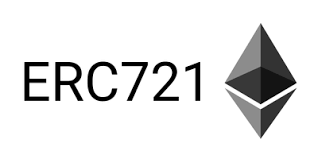As blockchain technology continues to revolutionize industries, one of the most transformative innovations is the ERC-721 token standard. Known for powering the rise of non-fungible tokens (NFTs), ERC-721 tokens have become essential to the development of digital art, gaming, virtual real estate, and beyond. This article explores what ERC-721 tokens are, how they differ from other token standards, and why they’re central to the decentralized digital economy — optimized for search engines and written with depth for readers looking to understand the real impact of ERC-721.
What Is an ERC-721 Token?
ERC-721 is a token standard on the Ethereum blockchain that defines a set of rules for creating non-fungible tokens (NFTs). Proposed in 2018, ERC-721 introduced the idea of uniqueness and indivisibility to the world of blockchain assets.
While ERC-20 tokens (used by coins like USDT, UNI, and LINK) are interchangeable and identical, ERC-721 tokens are unique. Each token has a distinct ID and metadata, making them ideal for representing one-of-a-kind assets like digital artwork, collectibles, or in-game items.
Key Features of ERC-721 Tokens
1. Non-Fungibility
Each ERC-721 token has a unique identifier. This non-fungibility allows for the representation of assets where uniqueness matters — such as digital real estate, music tracks, event tickets, or even physical property deeds.
2. Ownership and Provenance
With ERC-721, ownership of an asset can be publicly verified on the Ethereum blockchain. This allows for transparent history tracking, essential for digital art and collectibles where provenance adds value.
3. Interoperability
ERC-721 tokens can be used across various platforms that support the standard. Whether it’s marketplaces like OpenSea or virtual worlds like Decentraland, ERC-721 provides interoperability across the Ethereum ecosystem.
4. Metadata and Customization
Developers can attach metadata to ERC-721 tokens, allowing for rich asset descriptions, images, and even links to external content. This flexibility enables creators to craft immersive digital experiences.
How ERC-721 Powers the NFT Ecosystem
The explosion of NFTs in recent years wouldn’t be possible without ERC-721. From million-dollar crypto art to metaverse land sales, this token standard underpins the infrastructure of digital ownership.
Examples of ERC-721 in action:
- CryptoKitties: One of the first mainstream NFT applications, allowing users to breed and trade digital cats.
- Bored Ape Yacht Club (BAYC): A popular NFT collection that uses ERC-721 to certify unique ownership of digital avatars.
- Decentraland: Virtual land parcels are represented as ERC-721 tokens, enabling ownership and trading of digital real estate.
- Ticketing: Blockchain ticket platforms use ERC-721 to issue tamper-proof, resale-friendly tickets.

ERC-721 vs. ERC-1155 and ERC-20
| Feature | ERC-20 | ERC-721 | ERC-1155 |
|---|---|---|---|
| Fungibility | Fungible | Non-Fungible | Both |
| Use Case | Cryptocurrencies | NFTs | NFTs + Gaming |
| Batch Transfers | No | No | Yes |
| Metadata Flexibility | Basic | High | High |
While ERC-721 excels at representing individual assets, developers now also turn to ERC-1155 for efficiency in managing both fungible and non-fungible tokens — particularly in gaming ecosystems. However, ERC-721 remains the most widely adopted standard for NFTs due to its simplicity and clear structure.
Challenges of ERC-721
Despite its popularity, ERC-721 comes with limitations:
- High Gas Fees: Minting and transferring NFTs can be expensive on Ethereum, especially during peak network usage.
- Storage Limitations: On-chain metadata and large file sizes can be costly; many projects store metadata off-chain using IPFS or Arweave.
- Scalability: As NFT usage grows, ERC-721 relies on Ethereum’s scalability improvements (like L2 solutions) to keep up with demand.
Projects are now addressing these issues by integrating Layer 2 networks (e.g., Polygon, Arbitrum) or building on alternative blockchains like Solana and Flow.
The Future of ERC-721
As NFTs become more mainstream, the ERC-721 standard continues to evolve. Improvements like ERC-721A (created by Azuki) optimize minting for lower gas costs. Meanwhile, hybrid standards and bridges allow ERC-721 tokens to interact across chains, increasing their utility and reach.
With new use cases emerging in gaming, identity verification, ticketing, and intellectual property, ERC-721 will remain a cornerstone of blockchain-based digital ownership.
Final Thoughts
The ERC-721 token standard has fundamentally changed how we perceive and manage ownership in the digital world. By enabling unique, verifiable, and transferable assets on the blockchain, ERC-721 has unlocked a multibillion-dollar NFT industry and paved the way for the future of decentralized applications.
For developers, investors, and creators alike, understanding ERC-721 is essential to navigating the next generation of digital innovation.








Leave A Reply